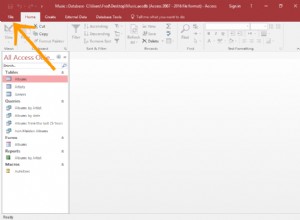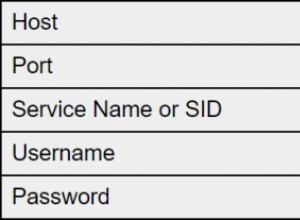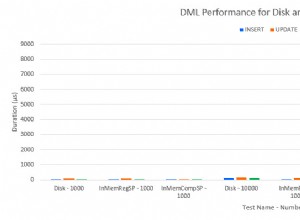Hay algunas maneras en que puedes hacer esto.
Si tuviera un número conocido de preguntas/respuestas, podría usar row_number() junto con una función agregada y una expresión CASE:
select id,
max(case when rn = 1 then question end) question1,
max(case when rn = 1 then answer end) answer1,
max(case when rn = 2 then question end) question2,
max(case when rn = 2 then answer end) answer2,
max(case when rn = 3 then question end) question3,
max(case when rn = 3 then answer end) answer3
from
(
select id, question, answer,
row_number() over(partition by id order by id, question) rn
from yt
) src
group by id;
Consulte SQL Fiddle con demostración
Otra sugerencia sería usar las funciones UNPIVOT y PIVOT para obtener el resultado. El UNPIVOT tomará su question y answer columnas y convertirlas en varias filas.
La sintaxis básica para UNPIVOT será:
select id,
col+cast(rn as varchar(10)) col,
value
from
(
-- when you perform an unpivot the datatypes have to be the same.
-- you might have to cast the datatypes in this query
select id, question, cast(answer as varchar(500)) answer,
row_number() over(partition by id order by id, question) rn
from yt
) src
unpivot
(
value
for col in (question, answer)
) unpiv;
Ver Demostración . Esto da un resultado:
| ID | COL | VALUE |
--------------------------------------------------------------
| 4482515 | question1 | I would like to be informed by mail. |
| 4482515 | answer1 | No |
| 4482515 | question2 | Plan to Purchase? |
| 4482515 | answer2 | Over 12 months |
| 4482515 | question3 | Test Question Text |
| 4482515 | answer3 | some Answer |
Como puede ver, agregué un row_number() valor a la subconsulta inicial para que pueda asociar cada respuesta a la pregunta. Una vez que esto se haya descentrado, puede girar el resultado en los nuevos nombres de columna con la question /answer con el valor del número de fila concatenado. El código con la sintaxis PIVOT será:
select id, question1, answer1, question2, answer2,
question3, answer3
from
(
select id,
col+cast(rn as varchar(10)) col,
value
from
(
-- when you perform an unpivot the datatypes have to be the same.
-- you might have to cast the datatypes in this query
select id, question, cast(answer as varchar(500)) answer,
row_number() over(partition by id order by id, question) rn
from yt
) src
unpivot
(
value
for col in (question, answer)
) unpiv
) d
pivot
(
max(value)
for col in (question1, answer1, question2, answer2,
question3, answer3)
) piv;
Consulte SQL Fiddle con demostración . Ahora en su situación, indicó que tendrá un número dinámico de preguntas/respuestas. Si ese es el caso, necesitará usar SQL dinámico para obtener el resultado:
DECLARE @cols AS NVARCHAR(MAX),
@query AS NVARCHAR(MAX)
select @cols = STUFF((SELECT ',' + QUOTENAME(c.col+cast(rn as varchar(10)))
from
(
select row_number() over(partition by id
order by id, question) rn
from yt
) d
cross apply
(
select 'question' col, 1 sort union all select 'answer', 2
) c
group by col, rn, sort
order by rn, sort
FOR XML PATH(''), TYPE
).value('.', 'NVARCHAR(MAX)')
,1,1,'')
set @query = 'SELECT id, ' + @cols + '
from
(
select id,
col+cast(rn as varchar(10)) col,
value
from
(
-- when you perform an unpivot the datatypes have to be the same.
-- you might have to cast the datatypes in this query
select id, question, cast(answer as varchar(500)) answer,
row_number() over(partition by id order by id, question) rn
from yt
) src
unpivot
(
value
for col in (question, answer)
) unpiv
) d
pivot
(
max(value)
for col in (' + @cols + ')
) p '
execute(@query);
Consulte SQL Fiddle con demostración . Estos dan un resultado:
| ID | QUESTION1 | ANSWER1 | QUESTION2 | ANSWER2 | QUESTION3 | ANSWER3 |
------------------------------------------------------------------------------------------------------------------------------------
| 4482515 | I would like to be informed by mail. | No | Plan to Purchase? | Over 12 months | Test Question Text | some Answer |




